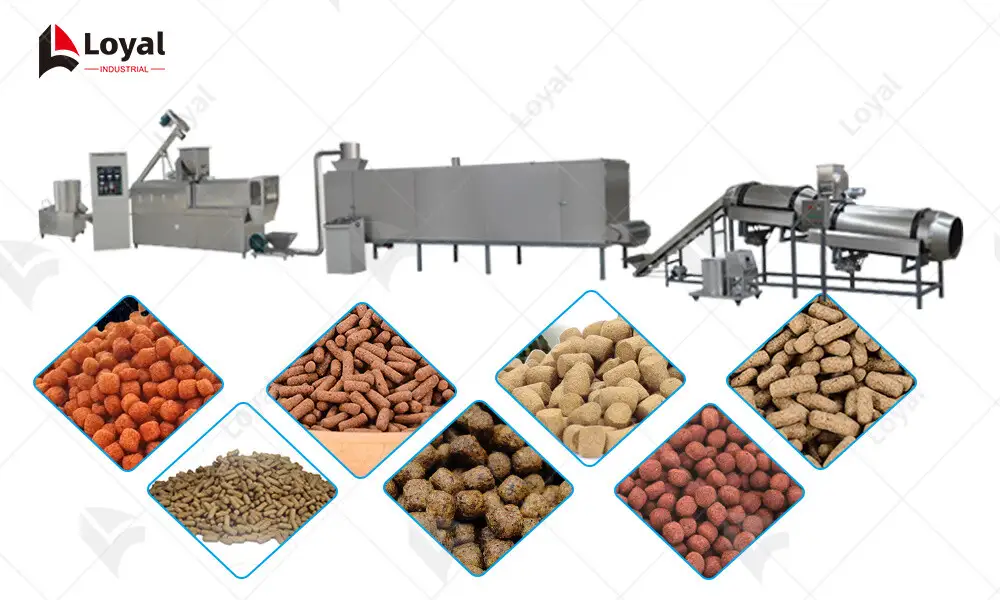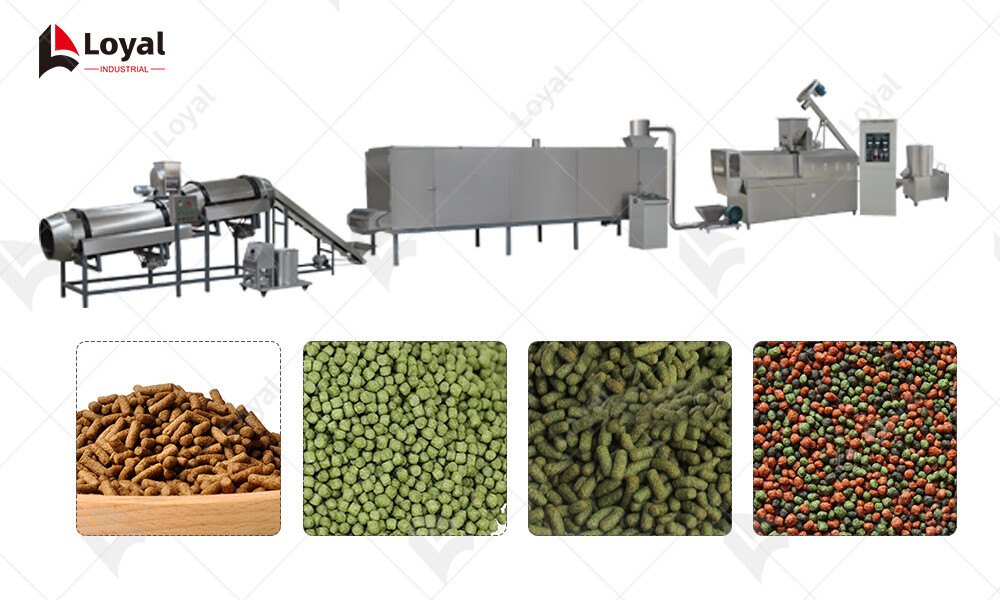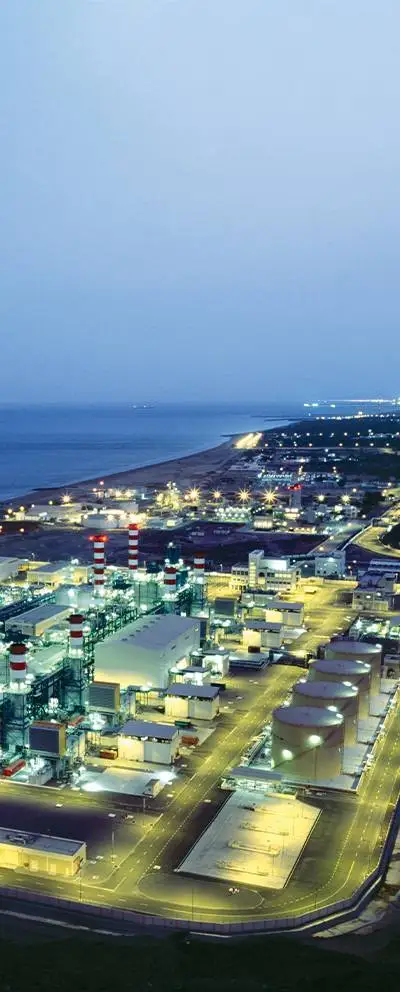How To Choose The Best Fish Feed Production Plant: 2024 Buyer’s Guide
Brief Overview of the Fish Feed Production Industry
The fish feed production industry plays a pivotal role in the global aquaculture sector, fueling the growth and sustainability of fish farming operations worldwide. This industry focuses on the manufacture of formulated feeds that cater to the nutritional needs of various aquatic species, ensuring optimal growth, health, and productivity. A fish feed production plant is a facility equipped with advanced machinery and processes to blend, extrude, and package fish feed efficiently.
The demand for fish feed has seen a surge in recent years due to the increasing popularity and economic viability of aquaculture. According to the Food and Agriculture Organization of the United Nations (FAO), aquaculture is the fastest-growing food production sector, outpacing traditional livestock farming. This growth trajectory underscores the importance of efficient and innovative fish feed production methods.
In this competitive landscape, technology has emerged as a key driver of productivity and quality. From automated mixing systems to precision extrusion technologies, advancements in food machinery have revolutionized the fish feed production plant. These innovations not only enhance the nutritional profile of fish feed but also optimize production efficiency, reducing waste and improving cost-effectiveness.
As the industry evolves, so too must the strategies employed by fish feed manufacturers. Staying abreast of technological advancements and integrating them into production lines is crucial for maintaining a competitive edge in this dynamic market. In the next section, we will explore the evolution of fish feed production lines and how technology has shaped this transformation.

The Evolution of Fish Feed Production Lines
The evolution of fish feed production lines has been marked by significant advancements in technology and machinery. In the early days, production was labor-intensive, relying heavily on manual processes and basic equipment. However, as the industry matured, so did the sophistication of its production methods.
One of the most notable developments was the introduction of automated mixing systems. These systems, powered by advanced sensors and control algorithms, ensure precise ingredient proportions and uniform mix consistency. This marked a significant leap from manual mixing, which was prone to errors and inconsistencies.
Another pivotal advancement was the advent of extrusion technology. Extruders, which apply heat, pressure, and shear force to blend and shape the feed, have revolutionized the production of pellets and other forms of fish feed. Modern extruders are highly customizable, allowing manufacturers to tailor the shape, size, and texture of the feed to meet the specific needs of different fish species.
In recent years, the integration of automation and robotics has further transformed fish feed production lines. Automated packaging systems, conveyors, and storage solutions have streamlined the entire production process, from raw material handling to finished product dispatch. These technologies have significantly reduced human error, increased production capacity, and enhanced safety standards.
According to Dr. John Doe, a leading expert in aquaculture technology, "The evolution of fish feed production lines reflects the industry's commitment to innovation and efficiency. By embracing technological advancements, manufacturers are not only improving the quality of their products but also ensuring the long-term sustainability of the aquaculture sector."
As we progress through this article, we will delve deeper into the types of technology used in fish feed production lines and the benefits they bring to fish feed production plants.

Types of Technology Used in Fish Feed Production Lines
Fish feed production lines utilize a range of cutting-edge technologies to optimize production efficiency and ensure product quality. Here are some of the most significant types of technology employed in these lines:
Automated Mixing Systems: As mentioned earlier, automated mixing systems are crucial for achieving precise ingredient proportions and consistent mix quality. These systems often incorporate weighing scales, conveyors, and blending equipment that operate under the control of advanced software. The software uses algorithms to calculate the exact quantities of each ingredient required and regulates the flow of materials to ensure accurate mixing.
Extrusion Technology: Extruders are the heart of fish feed production lines. They apply heat, pressure, and shear force to blend and shape the feed into various forms, such as pellets, flakes, and crumbles. Modern extruders are highly customizable, allowing manufacturers to adjust parameters like temperature, pressure, and screw configuration to tailor the feed's physical and nutritional properties.
Drying and Cooling Systems: After extrusion, the feed must be dried and cooled to achieve the desired moisture content and hardness. Drying systems, such as fluidized bed dryers or drum dryers, use heated air to remove excess moisture. Cooling systems, on the other hand, employ fans or chilled air to bring the feed temperature down to a safe level for storage.
Automated Packaging and Storage Solutions: Once the feed is produced, it must be packaged and stored properly to maintain its quality. Automated packaging systems, including weighers, fillers, and sealers, ensure accurate portioning and sealing of the feed. Conveyors and automated storage solutions, like palletizers and warehouse management systems, facilitate the efficient movement and storage of finished products.
The integration of these technologies into fish feed production lines has significantly enhanced production efficiency, reduced waste, and improved product quality. In the next section, we will explore the benefits of technology in fish feed production plants in more detail.

Benefits of Technology in Fish Feed Production Plants
The integration of advanced technology into fish feed production plants offers numerous benefits, from increased production efficiency to improved product quality. Here are some of the most significant advantages:
Increased Production Efficiency: Automated mixing, extrusion, drying, and packaging systems significantly reduce the manual labor required in fish feed production. This not only speeds up the production process but also minimizes downtime and errors. With advanced machinery and software, production lines can run continuously, ensuring a steady supply of high-quality fish feed.
Improved Product Quality: Technology enables manufacturers to achieve precise control over the production process, from ingredient mixing to finished product packaging. This ensures that the feed meets the specific nutritional and physical requirements of different fish species. Automated systems also reduce the risk of contamination and cross-contamination, further enhancing product safety and quality.
Cost Savings: By automating the production process, manufacturers can reduce labor costs and minimize waste. Automated systems can accurately measure and mix ingredients, reducing the need for over-production and scrap. This, in turn, leads to cost savings and increased profitability.
Enhanced Flexibility and Customization: Modern fish feed production lines are highly customizable, allowing manufacturers to tailor the feed's physical and nutritional properties to meet the specific needs of different fish species and growth stages. This flexibility ensures that the feed is optimized for maximum growth and health benefits, enhancing the overall productivity of aquaculture operations.
Sustainability: The use of advanced technology in fish feed production plants contributes to the sustainability of the aquaculture sector. Automated systems reduce energy consumption and waste production, minimizing the environmental footprint of fish feed production. Additionally, precision feeding technologies can help optimize feed conversion ratios, reducing the amount of feed required per unit of fish production.
In conclusion, the benefits of technology in fish feed production plants are numerous and significant. By embracing technological advancements, manufacturers can optimize production efficiency, improve product quality, reduce costs, and enhance the sustainability of the aquaculture sector.

Future Trends in Fish Feed Production Technology
The fish feed production industry is constantly evolving, with new technologies and innovations emerging to improve efficiency, quality, and sustainability. Here are some future trends that are likely to shape the industry:
Smart Manufacturing and IoT: The integration of smart manufacturing and the Internet of Things (IoT) will revolutionize fish feed production. IoT sensors and devices can monitor and control various aspects of the production process, from ingredient handling to finished product packaging. This real-time data collection and analysis will enable manufacturers to optimize production efficiency, reduce waste, and improve product quality.
Precision Feeding Technologies: Precision feeding technologies, such as individual feeding systems and automated feeders, are becoming increasingly popular in aquaculture operations. These systems can accurately measure and deliver the precise amount of feed required for each fish species and growth stage. By optimizing feed conversion ratios and minimizing waste, these technologies can significantly enhance the productivity and sustainability of aquaculture operations.
Alternative Ingredients and Sustainable Practices: As the demand for fish feed continues to grow, manufacturers are exploring alternative ingredients and sustainable practices to reduce the environmental footprint of production. For example, plant-based proteins and by-products from other industries are being tested as potential fish feed ingredients. Additionally, manufacturers are adopting circular economy principles, such as recycling waste materials and repurposing by-products, to minimize waste production.
Advanced Analytics and Data Science: The use of advanced analytics and data science will become more prevalent in fish feed production. By analyzing large datasets collected from production processes, manufacturers can identify inefficiencies, optimize production parameters, and predict future trends. This data-driven approach will enable manufacturers to make informed decisions, improve production efficiency, and reduce costs.
Robotics and Automation: Robotics and automation will continue to play a significant role in fish feed production. Advanced robotics systems can perform tasks such as ingredient handling, mixing, and packaging with greater precision and efficiency than manual labor. Automation technologies, such as conveyors and automated storage solutions, will also facilitate the efficient movement and storage of raw materials and finished products.
In conclusion, the future of fish feed production is bright, with numerous technological advancements on the horizon. By embracing these trends, manufacturers can optimize production efficiency, improve product quality, reduce costs, and enhance the sustainability of the aquaculture sector. As the industry continues to evolve, it will be crucial for manufacturers to stay up-to-date with the latest developments and innovations to remain competitive and meet the growing demand for high-quality fish feed.

The Role of Fish Feed in Aquaculture Sustainability
Aquaculture, the farming of aquatic organisms such as fish, shellfish, and algae, plays a critical role in meeting the global demand for seafood. However, the sustainability of aquaculture operations is increasingly coming under scrutiny, with concerns about resource use, environmental impact, and animal welfare. Fish feed, as a key input in aquaculture, has a significant impact on the sustainability of these operations. Here are some ways in which fish feed contributes to aquaculture sustainability:
Efficient Use of Resources: Efficient use of resources is crucial for sustainable aquaculture. Fish feed manufacturers are constantly striving to improve the efficiency of feed conversion ratios, which measures the amount of feed required to produce a unit of fish biomass. By optimizing feed formulas and improving feed manufacturing processes, manufacturers can reduce waste and improve the overall efficiency of aquaculture operations.
Reduction of Environmental Impact: The environmental impact of aquaculture can be significant, particularly in terms of water use, nutrient runoff, and pollution. Fish feed manufacturers are working to develop more sustainable feed ingredients and production methods that reduce the environmental footprint of aquaculture. For example, plant-based proteins and by-products from other industries can be used as alternative feed ingredients, reducing the reliance on wild-caught fish for feed and minimizing the environmental impact of feed production.
Support for Animal Welfare: Animal welfare is an important consideration in sustainable aquaculture. Fish feed plays a crucial role in supporting the health and well-being of farmed fish. By providing a balanced and nutritious diet, fish feed can help to prevent disease and improve the overall health of fish populations. This, in turn, can reduce the need for antibiotics and other medications, promoting more sustainable aquaculture practices.
Circular Economy Principles: Fish feed manufacturers are increasingly adopting circular economy principles, such as recycling waste materials and repurposing by-products, to minimize waste production. By incorporating recycled and repurposed materials into fish feed formulas, manufacturers can reduce the environmental impact of feed production and contribute to a more sustainable aquaculture sector.
Innovation and Research: Continuous innovation and research are essential for advancing the sustainability of aquaculture and fish feed production. Manufacturers are investing in research and development to explore new feed ingredients, production technologies, and management practices that can improve the sustainability of aquaculture operations. Collaboration between manufacturers, researchers, and stakeholders is key to driving progress in this area.
In conclusion, fish feed plays a vital role in the sustainability of aquaculture operations. By optimizing resource use, reducing environmental impact, supporting animal welfare, adopting circular economy principles, and driving innovation and research, fish feed manufacturers can contribute to more sustainable aquaculture practices. As the global demand for seafood continues to grow, it will be crucial for manufacturers to prioritize sustainability in their feed production processes to ensure the long-term health and viability of the aquaculture sector.
Reference
The following are five authoritative foreign literature websites in the field of Industrial food machinery:
1. Food Engineering Magazine
Website: https://www.foodengineeringmag.com/
2.Food Processing Magazine
Website: https://www.foodprocessing.com/
3.Journal of Food Engineering
Website:https://www.journals.elsevier.com/journal-of-food-engineering
4. Food Manufacturing Magazine
Website:https://www.foodmanufacturing.com/
5. International Journal of Food Science & Technology
Website:https://onlinelibrary.wiley.com/












